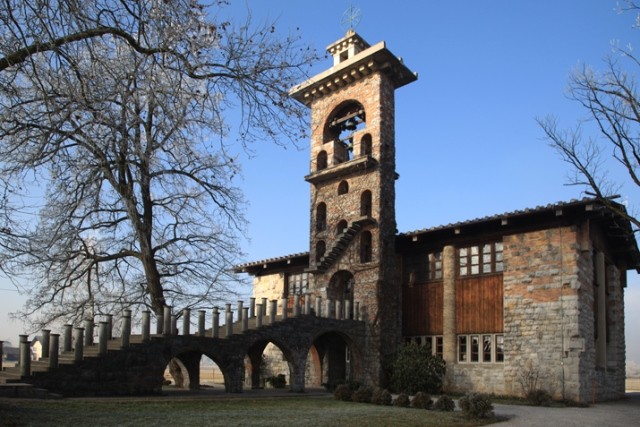Plečnik Heritage Finally on UNESCO List?
Published on 6 january 2015Slovenia will propose the listing of the St. Michael Church on the outskirts of Ljubljana and the St. Francis Church in the city, the riverside promenade in Ljubljana, which includes the Triple Bridge and the covered market, Vegova Street, and Žale Cemetery.
The Czech Republic, which started the initiative, will nominate the Church of the Most Sacred Heart of Our Lord in Prague since Hradčani, the castle where Plečnik did extensive work, is already listed as part of Prague's historical city centre.
Now only a preliminary list, the bid will be finalised in agreement between the partners and based on an assessment of the International Council on Monuments and Sites (ICOMOS), the Culture Ministry told the STA.
The listing procedure is long and complex, involving multiple preliminary stages. The ministry believes it could take about four years provided everything runs smoothly.
Slovenia sees the listing as an opportunity to promote Slovenian heritage, as UNESCO World Heritage Sites tend to attract more visitors and many tourists focus on picking out such destinations.
Moreover, listed sites enjoy a higher level of protection, as management and maintenance becomes an international commitment for the host countries, not just an obligation for the owners.
Plečnik did extensive work in Vienna and Prague, but it is Ljubljana that is home to his most celebrated works. Indeed, it is said in architecture circles that no architect has influenced the image and development of a single city to the extent that Plečnik has left his mark on Ljubljana.
He redesigned much of central Ljubljana in the first half of the 20th century, including the iconic Triple Bridge and the Cobbler's Bridge, the riverbanks in the centre and the central market.
Other visible works in the Slovenian capital include the Bežigrad Stadium, the National and University Library, the Žale Cemetery, the insurance company building now housing Zavarovalnica Triglav, and the Križanke open air theatre, his last major project in the city.
His style is associated with Vienna Secession architecture, but he developed an idiosyncratic architectural language by using classical elements at a time when classical architecture was considered well past its prime, mixing them liberally with modern construction methods and elements.
In 2009 his Ljubljana works, 50 units in total, were declared a cultural monument of national importance.
Slovenia already has three World Heritage Sites: the Škocjan caves, prehistoric pile dwellings on the Ljubljana marshes, and the mercury mine heritage in Idrija.
Source: The Slovenia Times


